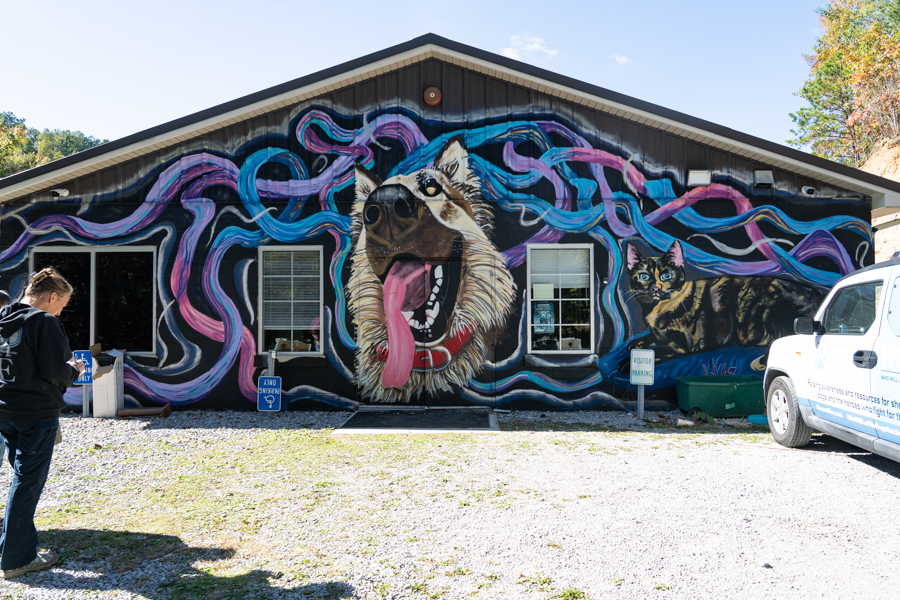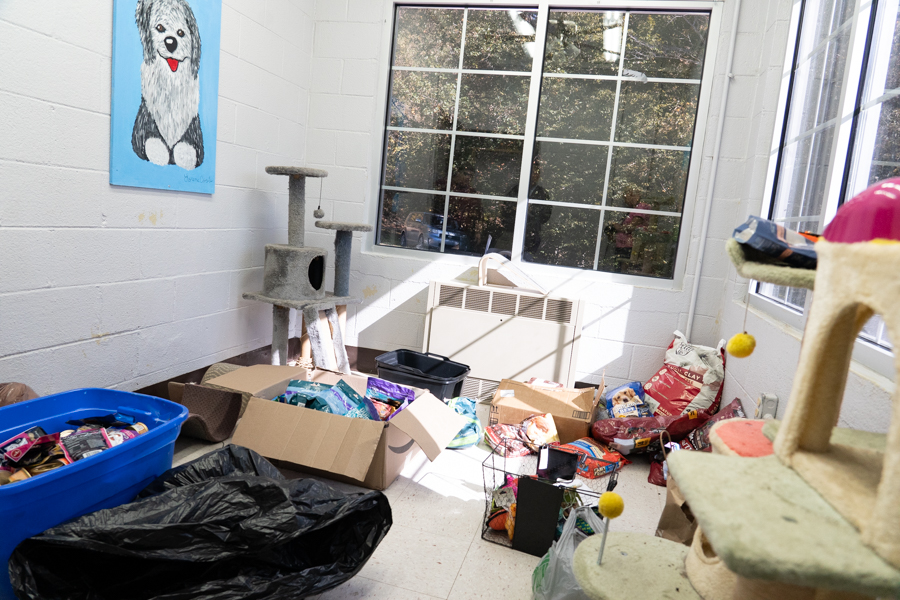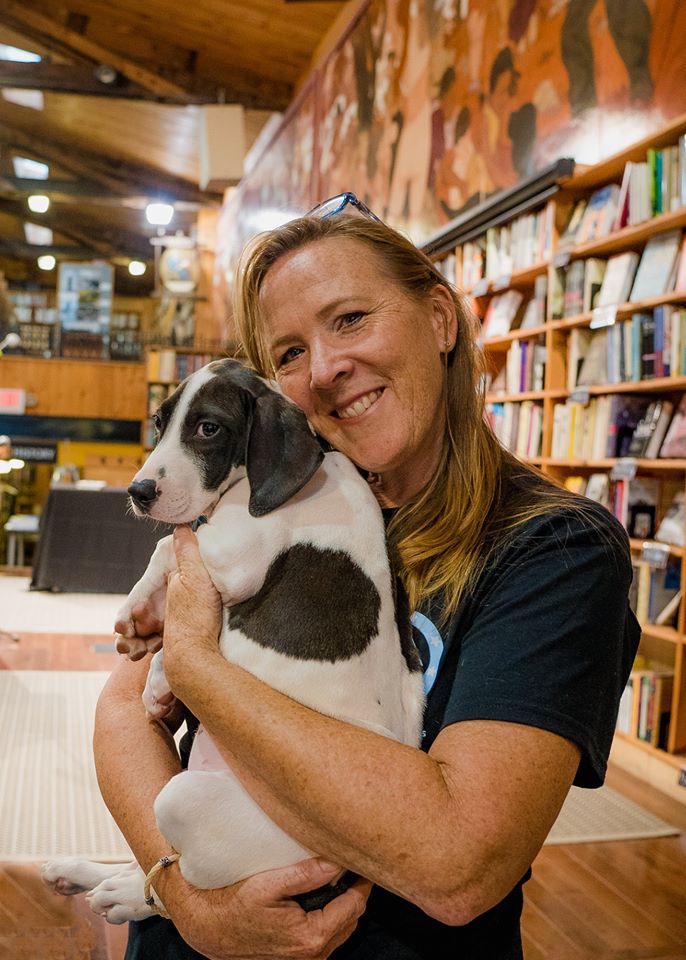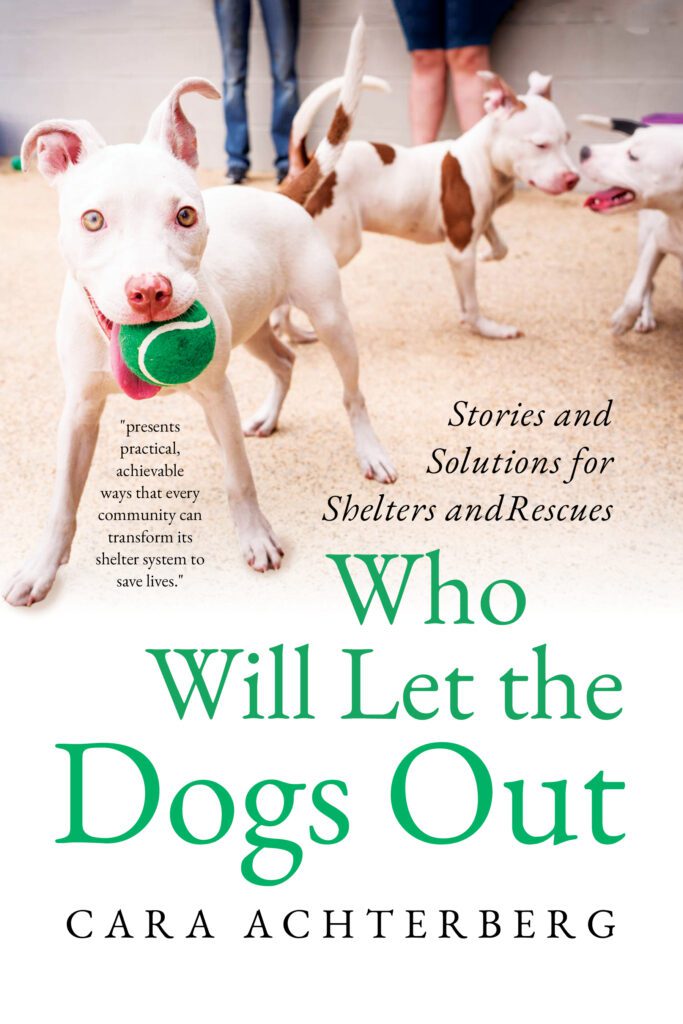Our first stop in Kentucky was at Leslie County Animal Shelter. Like many municipal shelters, it was located right next to the waste transfer station and the jail.
The building is a simple concrete one that houses the staff, medical area, cats, and four quarantine kennels (there is a separate polebarn-type kennel for the dogs). Two of the exterior walls are brilliantly painted by a local spray-paint artist. So, while the shelter’s sign on the road is completely white-washed by the sun, once you drive up the gravel road to the shelter, you know you’re in the right place.

Thanks to a grant, the shelter and kennel roofs are covered in solar panels. Prior to 2020, this was a dark place where they euthanized all the cats on Fridays, and apparently, the dogs didn’t fare a whole lot better.
When a new Judge Executive was elected in 2019, the shelter staff (except John, who has been there for 14 years) were let go, and Katherine was hired in early 2020 to run the shelter. Katherine had been working in the Judge’s office on Fema projects. She took the job ‘basically because my boss told me to.’
Other than having a cat and a dog at home and a real love for animals, she had zero experience in shelters. Lucky for Leslie County, she’s a smart woman and a quick study. She visited a few other shelters, asked lots of questions of the rescues who were helping the shelter, and educated herself on the job.
Katherine admits there were a few mistakes in the beginning, but now things at the shelter seem quite hopeful. Their cat playroom was full of donations brought in by several local groups and the walls were adorned with artwork created by another local organization.

John and Katherine walked us through to meet the dogs. The shelter handles 800-900 animals a year, many more dogs than cats.






A small, bright building with four kennels is being installed in an open area behind the kennel building. It will be a much calmer place for dogs, and Katherine hopes to add additional small buildings.
Housing dogs like this in individual small buildings or pods within the shelter is smart for the health of the population (mental and physical). The model essentially limits the dogs’ exposure to each other and reduces the chance that illness and worms can be transferred to the entire population. It’s also a quieter setup for dogs who are stressed by the presence and noise of so many dogs in one building.


Most LCAS dogs leave via rescue, but some linger for a year or longer, particularly the larger dogs. We met a sweet collie mix named Otto who had been at the shelter for two years. Part of that time was a court hold, but after meeting Otto, it was surprising that he was still there. He’s an affectionate and beautiful dog. [UPDATE: Otto finally found his forever home in Minnesota!]


John brought out two others who had been at the shelter for a year. Danny is a black and white mixed breed who reminded me of my boy Otis, with a darling personality. We featured him in our WWLDO 2025 calendar (July). [UPDATE: Danny found a forever home in Indiana]


Since 2020, the shelter usually only euthanizes for behavioral or medical reasons. They try to give every dog a chance. While they are technically open intake, if they are full, they ask people wanting to surrender dogs to hold on to the dogs while they work to make room, offering them food if they need it.
There have been many positive changes – like vaccinating for distemper on intake and treating for fleas/ticks, but Katherine would like to be able to have all the dogs spayed/neutered and vaccinated for rabies before they leave. Right now, a few are, but most leave with a certificate for spay/neuter (and rabies) at the vet in Clay County.
Many people in the area live on a fixed income, and quite a few don’t drive far, so shelter staff pick up the animals to take them for their spay/neuter and leave them at the vet in Clay County. The veterinarian fits in the surgeries where he can that week, boarding them (for free) while they wait. Then, owners can pick them up, or the shelter staff will do it. This helps the shelter know for sure that the animals are being altered.



Katherine is glad that the relationship with the community is improving. She’d like to utilize volunteers, but it’s challenging since a jail crew comes over each day to clean and walk the dogs. The schedule isn’t regular enough for her to invite volunteers to the shelter.
The shelter has come a long way in the last few years, but Katherine is hopeful that they will continue to improve. In addition to more small kennel buildings, the shelter could really use a play yard. While the kennels are relatively large, most are inside, and the dogs would benefit from having outside playtime. [UPDATE: they shelter now has a few outdoor runs for the dogs to get out and play and they are enjoying it]
The current Judge Executive and the community are invested in high-quality animal services, and that’s evident in the changes that have happened at Leslie County Shelter. It’s exciting to see this shelter evolving and growing to serve its community.
Here’s hoping they can come up with a solution to allow the community to volunteer. Not only will it help the staff, it will improve the lives of the dogs in their care. As we see everywhere we go, involving the community to volunteer, foster, and advocate for the shelter is the key to long-term success.
If you’d like to encourage this little shelter, consider sending them supplies by shopping their Amazon wishlist: https://www.amazon.com/hz/wishlist/ls/2QM619O8ECSPS

Cara
If you want to learn more, be sure to subscribe to our email list to get the latest stories and solutions delivered to your inbox. And help us spread the word by sharing this post with others. Visit our website to learn more.
You can also help raise awareness by following/commenting/sharing our content on Facebook, Instagram, YouTube, and Tik Tok.

Who Will Let the Dogs Out: Stories and Solutions for Shelters and Rescues was published in January of 2025. It is filled with stories and ideas to help everyone be part of the solution. You can buy a hardback or paperback copy for yourself and/or buy a copy for a shelter or rescue through our website. It is also available on Amazon in paperback and ebook.
To see our Emmy-nominated, award-winning short documentary, Amber’s Halfway Home, click here.
For more information on any of our projects, to talk about rescue in your neck of the woods, or partner with us, please email cara@WWLDO.org.
And for links to everything WWLDO, including volunteer application, wishlists, and donation options, check out our Linktree.



Leave a Comment
Sign up for our newsletter
Sign up to have our latest news, grant updates, shelter visits, and more delivered to your inbox.
Share this:
Like this: